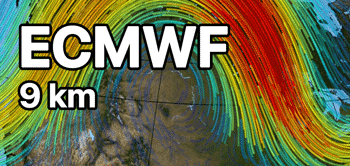
Here you can read about our data sources. Ventusky serves as a platform for visualizing meteorological data. The main provider of meteorological data for Ventusky is DWD and NOAA. However, the radar layers (marked as EURAD, USRAD and WORAD) have several other country-specific providers, which are summarized below. More information about currently used data source can be found in the lower left corner of our website by clicking on the "i" icon.
| Model | Source | Data link |
| GFS, HRRR, RTOFS, STOFS, NBM | NOAA | NOMADS |
| ICON, ICON (EU), ICON (DE) | DWD | Open Data Server |
| GEM | CMC | Goverment of Canada |
| SILAM | FMI | System for Integrated Modelling of Atmospheric Composition |
| ECMWF | ECMWF | European Centre for Medium-Range Weather Forecasts |
| UKMO, UKMO (UK) | Metoffice | Metoffice - data |
| AROME, MFWAM | Meteofrance | Meteofrance - Données publiques |
| MEPS (NO), WAVEWATCH (NO) | Meteorologisk institutt | Free meteorological data - Meteorologisk institutt |
| Copernicus | Copernicus | Copernicus services catalogue |
| Satellite | Source |
| GOES-16 | NOAA CIRA (GeoColor processing) |
| GOES-17 | NOAA CIRA (GeoColor processing) |
| Himawari | JMA CIRA (GeoColor processing) |
| METEOSAT | EUMETSAT |
| Country | Source |
| USA and Canada | NOAA, CMC |
| Germany | DWD |
| UK | Metoffice |
| France | Meteofrance |
| Spain | AEMET |
| Sweden | SMHI |
| Finland | FMI |
| Norway | MET |
| Slovakia | SHMÚ |
| Czechia | ČHMÚ |
| Poland | IMGW |
| Netherlands | KNMI |
| World | EUMETSAT, Rainviewer.com |
| Country | Source |
| World | OpenStreetMap (Wikimedia) |